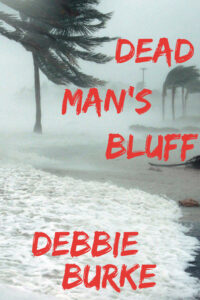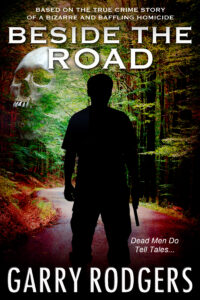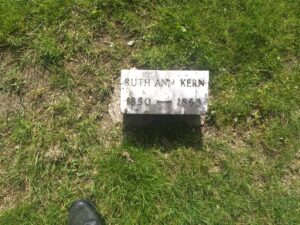By PJ Parrish
I don’t know about you, but I am really ready for a good writer to take me away from it all. And I am always up for a bracing hike. So today, come along on our First Page Critique, as our submitting writer takes us to the wilds of northern England across the Coast to Coast Trail. I hope we’re in for some good mischief along the way.
A Lethal Walk in Lakeland
Chapter One
I settled myself on a weathered oak bench and began securing the laces of my leather walking boots. This was the start of a long-anticipated week’s walk in England’s fabled Lake District, but I was apprehensive. Before me angry waves were hammering the shore, each shaking the ground as if a bomb had exploded. Strong gusts of wind from the north were slashing against us.
“We’re supposed to walk into that?” said the woman beside me, a small grey-haired wisp of a creature named Billie, as she surveyed the roiling waters of the Irish Sea. She should have been wearing a waterproof jacket, but instead had on one of her thick self-knitted sweaters displaying a pattern of squirrels and acorns. The outfit had been fine when we were in the town center–protected from the wind by cliffs to the north–but no longer. It was hard to believe that a few hundred yards could make such a difference.
“We just have to stick in our boots in the water,” I said. “If we do it quickly enough we should be all right.”
Around us our fellow walkers, eight of them, were also eyeing the sea with the trepidation. Yet this ‘christening of the boots’ was a time-honored ritual for anyone about to tackle England’s famed Coast to Coast path, which traverses the Lake District, Yorkshire Dales and North York Moors to Robin Hood’s Bay on the North Sea.
“Everyone ready?” asked Charlie Cross, our white-haired tour guide. Beaming a broad grin, he didn’t seem fazed by the heavy surf. The group followed him down to the water.
“Are you sure it’s safe?” asked Fiona, a beautiful brown-haired woman whom, I learned, was one of the six members of the Upton family from Texas in our group.
______________________
I wish I were going along. I’ve hiked in a couple foreign countries, and one of my dreams has been to hike the Appalachian Trail. I hadn’t heard of the Lake Country’s Coast to Coast path. Something new to put on my bucket list. So, as you can guess, I am predisposed to liking this submission on the location alone. But as much as setting is vital to a good story, it isn’t enough. Does the story itself hold up?
I think this is a pretty darn good start. The writer has chosen to put us literally at the beginning of the action. I love the tradition of dipping the boots into the sea before venturing out. I almost wish the writer had given us just a few more graphs so we could see if this ritual works as a foreshadowing of something dire to come. (I hope it is!)
I like that the writer didn’t start earlier, say with the group meeting in the village with a clearing-the-throat introduction of the whole party getting acquainted. (The writer chose instead to just reference the village in passing). We should learn about the hikers (possible suspects?) as we meander on, not in a group-grope info-dump.
I suspect we are working in a cozy genre here, but I could be wrong. The tone registers on the lighter side, which is fine. As I understand it, the hike takes about a week which is plenty of time for something nefarious to happen.
I don’t know if this was the writer’s intent, but we are almost in the classic Agatha Christie “closed parlor room” genre here: A group of strangers is about to be cloistered on an adventure and I would guess someone will die and whoever our protagonist is will be charged with solving the on-the-road crime. Perhaps the murder takes place in hostel out in the wilds.
Likewise, it is good that the writer mentions only a couple named characters. I trust the writer will find a graceful way to tell us the name (and a little background) of our first-person point-of-view narrator soon.
Notes on craft: The writer is on solid ground here, I think. The dialogue is handled correctly, the paragraphing and syntax fine. But with such an assured hand, I’d like to see the writer work a little harder. I’m always a little tougher on the better submissions,
For starters, I’d like to see the writer work harder at more original description. This is such a stunning setting; it deserves more eloquence than surf that “explodes like a bomb.” That’s a cliche, dear writer, it doesn’t come from you. Find something more bracing. Likewise, don’t rely on lazy words like “beautiful” for Fiona. Ditto for Charlie. “White-haired” isn’t vivid enough.
Description is hard. You have to dig deep into your own experience to find the right words or metaphors and then filter it through your protag’s consciousness. I like what you did, for example, with Billie — by telling me, in one line, that she chose to wear an acorn/squirrel sweater instead of something more practical, you sketched an immediately sharp portrait of her.
But in general, I enjoyed this. It is a measured, leisurely beginning and that is okay. Just be aware, writer, that we need some injection of tension in your first chapter, a hint of bad things to come. Even with a soft opening like this you have to have a portent of ominous things on the path ahead — the literal one the hikers will travel, and the metaphoric one you take your reader on.
Let’s do some line editing:
I settled myself on a weathered oak bench and began securing the laces of my leather walking boots. This was the start of a long-anticipated week’s walk in England’s fabled Lake District, but I was apprehensive. Not a bad first graph but this is an example of telling instead of showing. Instead of telling us she is apprehensive, find a way to showing it via her thoughts or dialogue or actions. Just an example here:
I finished lacing my walking boots and looked up at the roiling green sea. With each crash of the waves, I could feel the wooden bench shake beneath me. I pulled in a deep breath and blew onto my cold hands. A sharp wind was surging in from the north, penetrating the nylon of my coat.
I should have worn gloves, I thought. I should have packed that extra sweater. I should have told someone where I was going. But I hadn’t wanted anyone to know. For once in my life, I wanted to be alone. And I wanted to be brave.
That is corny, but I am trying to make the point that you need to find ways to inject drama and something personal about your protag’s METAPHORIC JOURNEY as early in the story as you can. Make us care about her and attach to her (or is it a him?) as quickly as you can. And never let a chance go by to layer in her personality.
Before me angry waves were hammering the shore, each shaking the ground as if a bomb had exploded. Strong gusts of wind from the north were slashing against us. Nice verb there. But you could be more active: The angry waves hammered; the wind slashed.
“We’re supposed to walk into that?” said the woman beside me, a small grey-haired wisp of a creature I rather like that named Billie, as she surveyed the roiling waters of the Irish Sea. Good way to slip in the geography She should have been wearing a waterproof jacket, but instead had on one of her thick self-knitted sweaters displaying a pattern of squirrels and acorns. The outfit had been fine when we were in the town center–protected from the wind by cliffs to the north–but no longer. It was hard to believe that a few hundred yards could make such a difference.
“We just have to stick in our boots in the water,” I said. “If we do it quickly enough we should be all right.”
Around us our fellow walkers, eight of them, were also eyeing the sea with the trepidation. Yet this ‘christening of the boots’ was a time-honored ritual for anyone about to tackle England’s famed Coast to Coast path, which traverses the Lake District, Yorkshire Dales and North York Moors to Robin Hood’s Bay on the North Sea. This sounds a little dry. I know you need to convey this info, but find away to make it sound like it comes from your protag and not Fodors. You can also use it, again, to tell us something about your protag. Example:
I wasn’t from this area of northern England. I had been born and raised in London so a long hike for me was to the tube station. But I had always wanted to do this week-long trip that stretched from the the whatever, crossed the whaterever, and ended wherever.
See what that does? It makes the info personal and lets the reader get to know your protag.
“Everyone ready?” asked Charlie Cross, our white-haired tour guide. Beaming a broad grin, he didn’t seem fazed by the heavy surf. The group followed him down to the water.
“Are you sure it’s safe?” asked Fiona, a beautiful brown-haired woman whom, I learned, was one of the six members of the Upton family from Texas in our group. Would be a nice place to slip in a thought from your protag. How does she feel about the make-up of her group? I went on a hiking trip in Provence once, and the first day I met my motley group — the people I would live with for the next two weeks — I was intensely curious about where they had come from. This is important if someone in this group will be murdered AND if someone is the killer. Start laying your bread-crumb trail of clues as early as possible.
As I said, I think we’re off to a grand start here, but I know this writer has the chops to dig deeper and do better. Oh, speaking of which, as you go on your writing journey, dear submitter, be on the lookout for a better title. (Good titles often don’t reveal themselves until you’re done with the book). I don’t think this one does your setting and set-up justice. For starters, Americans like me will think of Lakeland, Florida. And “A Lethal Walk” is a touch too spot-on. Look for something more metaphoric that captures the wild scenery and says something about the journey. One of my favorite quotes about hiking is from the naturalist John Muir: “In every walk with nature, one receives more than he seeks.” Maybe that’s what your protagonist is after? Find something that speaks to the soul of your story.
Thanks for the submission and letting us share it.









 “Life is like a box of chocolates—you never know what you’re gonna get.” — Forrest Gump
“Life is like a box of chocolates—you never know what you’re gonna get.” — Forrest Gump







